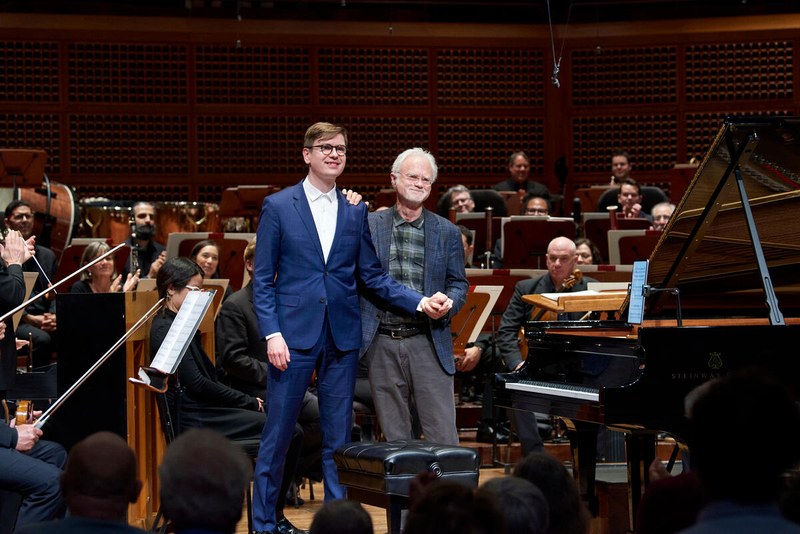
Post-Millennial Symphonic Innovation
One of the boldest S.F. Symphony programs featured three works of average age 42, the anchor being the stellar Sibelius Symphony 5.
While most of the interest was focused on the popular septuagenarian Berkeley composer John Adams, the work that really blew me away was “Radical Light” by the late Steven Stucky. The fact that Stucky, a master of sonic delights, has been virtually unknown is directly related to his being, for many years, the composer in residence of the rival Los Angeles Philharmonic. In “Radical Light” (2007) he establishes a wondrous sonic environment, like wandering about a huge chamber of a cave without beginning or end, having countless colorful rock formations to feast your senses on. And the orchestra rose to the occasion with keen sensitivity.
Within the 18 minutes Stucky establishes his new world, starting with ear-tickling subtlety: The softest of violins murmuring, gentle solos on flute, oboe, bassoon, even a soft, yes soft, brass chorale in which new voices are added one by one till the full chord is evident. Tonal consonant figures abound, with rising tones like bubbles in the sea. This is music as far from the mainstream as Sibelius was from central European composers. Yes, there are glints of Sibelius’ landscapes here. But above all this is dazzlingly beautiful music, unfortunately forcing on the conductor (Esa-Pekka Salonen) beads of perspiration with the myriad meter changes on every page, forcing eyes glued to the score with rarely a look at the orchestral musicians all around.
John Adams finally composed his first piano concerto at an age when most have composed their last one, entitled “Must the Devil Have All the Good Tunes?” Perhaps inspired by Paganini and Liszt, Adams doubles down on the piano-punishing thunderous and unflagging chords a la Prokofieff, relegating the orchestra into a mere punctuation-and-rhythm mode. Here the piano is star, the orchestra the decorator. Even his welcome instrumental innovations like a backup upright (honky-tonk) piano and an electric guitar are near-inaudible in the total sound. The short sharp bursts of orchestra are a familiar signature of Adams, always more rhythm-oriented than languorous.
The challenge for the emerging Icelandic pianist Vikingur Olafsson is to avoid merely pounding the piano mercilessly. If he fell victim in the furied opening movement, he brought a light touch to the ruminative slow movement with its memorable lyrical theme, though I could still visualize Olafsson loosening up more in the future. In the finale comes a skip and dance, jazz with a boogie bass, a toe-tapper and even glints of Bartok, to whom Adams feels great affinity.
A caution to budding pianists: Expression phrases on contemporary scores are no longer just legato or spiccato. The new vocabulary got a big boost in scores of Julia Wolfe, where she would write “trippy.” Adams here has “gritty, funky, twitchy, bot-like.” Hopefully, some one is assembling a newly augmented dictionary of musical terms specifically for performers.
In a video, Adams, 75, explained his longterm “wound” accounting for his piano silence: mastering clarinet instead of piano, which is the indispensable tool of most composers….Olafsson played as encore the unruffled Bartók Three Hungarian Folk Songs from Csík, which unleashed his sensitive side.
The concert concluded with Sibelius’ mighty and inspiring Symphony No. 5.
San Francisco Symphony, Esa-Pekka Salonen music director, in Stucky, Adams, Sibelius, through June 25. Davies Hall, S.F. For info: www.sfsymphony.org.